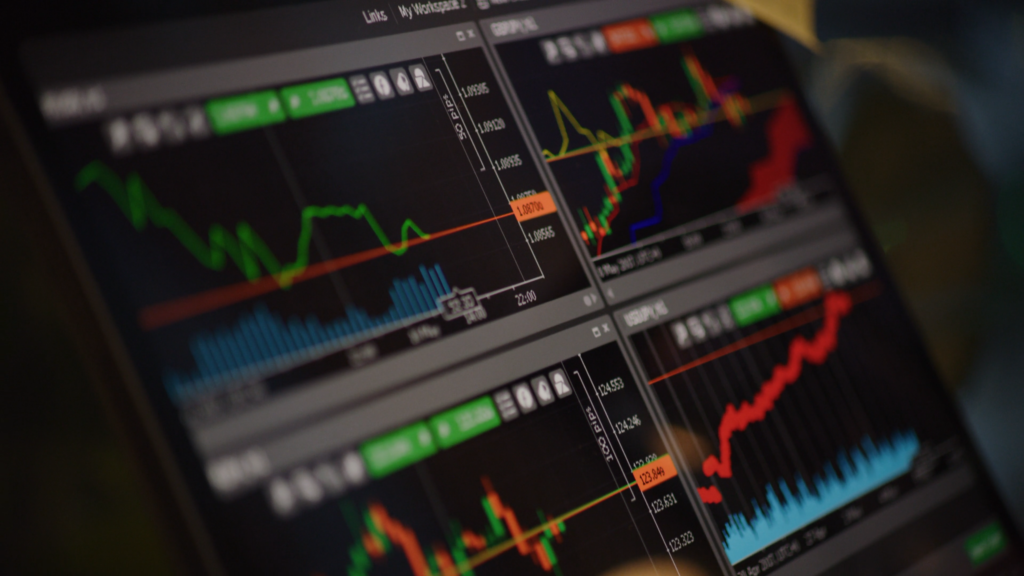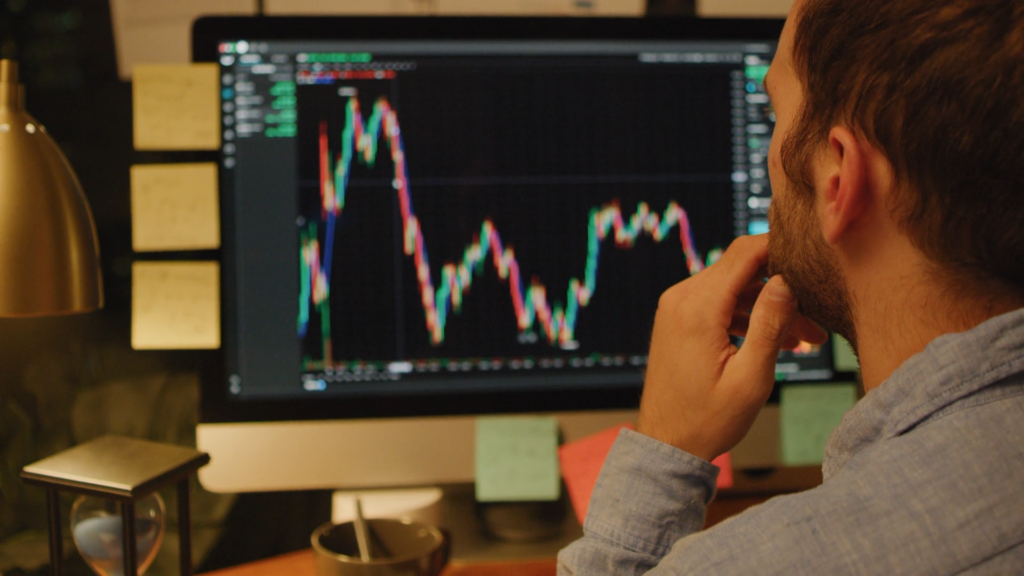
FXgram
The Ugly Truth About Trading
Related Posts
A Day In The Life Of A Forex Trader
Hi everyone! Today, I’m excited to take you through a typical day in my life as a Forex trader. If you’re new to trading or have had a rocky experience in the past, I hope my story can shed some light on what it’s really like to trade Forex.
Published by FXgram on June 11, 2024
Open a trading account
with a Broker right now
Read the Risk Warning before you register
Morning Routine: Success Mindset
My name is Matt, I’m a professional trader and I have been living in Bali for almost 8 months. If you are a trader or interested in Forex please read this article until the end.
My day starts early at 6 AM. The first thing I do is grab a cup of coffee and check the latest market news. I follow several financial news websites to get a sense of the market sentiment and any overnight developments that might affect my trading strategy.
For instance, on March 1, 2024, I came across news that geopolitical tensions and ongoing robust central bank purchases provided strong foundational support for the gold rally. Central banks, including India’s Reserve Bank, continued to add to their gold reserves. Knowing this, I immediately pulled up the XAU/USD chart to analyze the potential market movements. The chart from that morning showed a consolidation pattern, indicating that traders were waiting for more information before making any major moves.
By 7 AM, I’m at my desk, reviewing these charts and analyzing trends. Here’s what I saw:

- Support and Resistance Levels: The chart showed a strong resistance level at $2,055. The contributing factor was a surge in technical buying. Gold broke through several psychological and technical resistance levels, which spurred additional investment from traders covering short positions and those seeking to capitalize on the upward momentum.
- Candlestick Patterns: I also noticed a series of doji candles forming near the resistance level in previous days. This often precedes a breakout or a reversal, making it a critical point to watch.
- Simple Moving Averages: The price remained above 50-day, 100-day, and 200-day averages, thus indicating an uptrend, suggesting bullish sentiment in the market.
- Volume Indicators: There was an increase in trading volume during the Asian trading session, coinciding with the news of the potential interest rate hike. Higher volume often confirms the strength of a price movement, whether it’s up or down.
- Economic Calendar: A weak ISM manufacturing report in the U.S. could become a crucial trigger but given the unpredictable nature of such events, it was essential to carefully calculate the associated risks.
Based on these signals, I anticipated that the market would experience prevailing bullish sentiment. This analysis helped me prepare my trading strategy for the day.
Trading Session: The Heart of the Day
By 8 AM, I’m ready to start trading. My focus is on XAU/USD. With the news on the growing geopolitical tensions in mind, I placed a few strategic long positions on gold, anticipating a rise in its price.
Open a trading account
with a Broker right now
Read the Risk Warning before you register
Here are the trades I made throughout the day:
1.
• Position size: 10 ounces
• Entry price: $2,056 per ounce
• Exit price: $2,071 per ounce
• Profit per ounce: $15
• Total profit: $150
2.
• Position size: 5 ounces
• Entry price: $2,055 per ounce
• Exit price: $2,053 per ounce
• Loss per ounce: $2
• Total loss: $10
3.
• Position size: 15 ounces
• Entry price: $2,058 per ounce
• Exit price: $2,072 per ounce
• Profit per ounce: $14
• Total profit: $210
4.
• Position size: 10 ounces
• Entry price: $2,060 per ounce
• Exit price: $2,078 per ounce
• Profit per ounce: $18
• Total profit: $180
By the end of the day, my trades had yielded a total profit of $530.
Here’s the breakdown of the profits and losses:
Trade 1: $150 profit
Trade 2: $10 loss
Trade 3: $210 profit
Trade 4: $180 profit
Afternoon Routine: Reflect and Plan Ahead
Around 2 PM, I take a break to have lunch and clear my mind. Trading can be intense, so it’s essential to step away and recharge. After lunch, I reviewed the trades I had made. The broker I use provides detailed reports and analytics, which help me understand my performance and areas for improvement. This data is invaluable for refining my strategies and becoming a better trader.
By 4 PM, I start winding down my trading activities. I close out any remaining positions and review the day’s performance. This is also the time when I plan for the next day, setting up alerts and preparing for potential market movements.

Evening Routine:
Balancing Work and Life
Evenings are my time to relax and unwind. I usually spend time with family, read a book, or watch a movie. It’s important to have a balanced life, especially in the fast-paced world of Forex trading.

8 Things You Need to Know About Choosing a Broker
Choosing the right broker is one of the most critical decisions you’ll make as a Forex trader. Here are some essential factors to consider:
1. Regulation and Security
Ensure your broker is regulated by a reputable financial authority. Regulation ensures that the broker adheres to strict financial standards and practices, protecting your investments. Examples of reputable regulatory bodies include the Financial Conduct Authority (FCA) in the UK, the Commodity Futures Trading Commission (CFTC) in USA, the Australian Securities and Investments Commission (ASIC).
2. Trading Platform and Tools
A reliable trading platform is crucial for executing trades efficiently. Look for brokers that offer robust, user-friendly platforms with advanced charting tools, real-time data, and automated trading capabilities. MetaTrader 4 (MT4) and MetaTrader 5 (MT5) are popular choices among traders.
3. Transaction Costs
Consider the transaction costs associated with trading, including spreads, commissions, and overnight fees. Lower transaction costs can significantly impact your overall profitability, especially if you trade frequently.
4. Leverage Options
Leverage allows you to control a larger position with a smaller amount of capital. While leverage can amplify profits, it also increases the potential for losses. Choose a broker that offers reasonable leverage options and provides clear information about the risks involved.

My message to newbies and those who lost and were close to ending their trading career
Trading is an amazing choice. I remember the day I started my journey in trading. It wasn’t great from the beginning. I had my ups and downs, but in total I’m a day trader now, and every time I ask myself what is a trader’s job the answer is simple:
- To be in! In social media, in the news, because everything that happens can affect the market.
- To learn continuously. I’m learning new strategies and trying to implement it in my trading sessions. This is the best way – you dive deeper into information and learn things through experience and not theories. So, stop wasting your time with theories and start acting. Week after week you will become better.
- To seek the best information is to harness power. The more diligently you search, the more accurate your predictions will become.
- To manage risks. So trading is losing sometimes, and risk management is the most important thing to implement in your trading sessions. Even if your account is small and you see that your last few trades were successful, never lose sight of your strategy and maintain your discipline.
Open a trading account with a Broker right now
Read the Risk Warning before you register
Find more interesting stories and news about investments on our subreddit XGramatikInsights.

FXgram
The Ugly Truth About Trading
Related Posts
Risk Warning: Trading Forex and Leveraged Financial Instruments involves significant risk and can result in the loss of your invested capital. You should not invest more than you can afford to lose and should ensure that you fully understand the risks involved. Trading leveraged products may not be suitable for all investors. Before trading, please take into consideration your level of experience, investment objectives, and seek independent financial advice if necessary. It is the responsibility of the Client to ascertain whether he/she is permitted to use the services of the website based on the legal requirements in his/her country of residence.